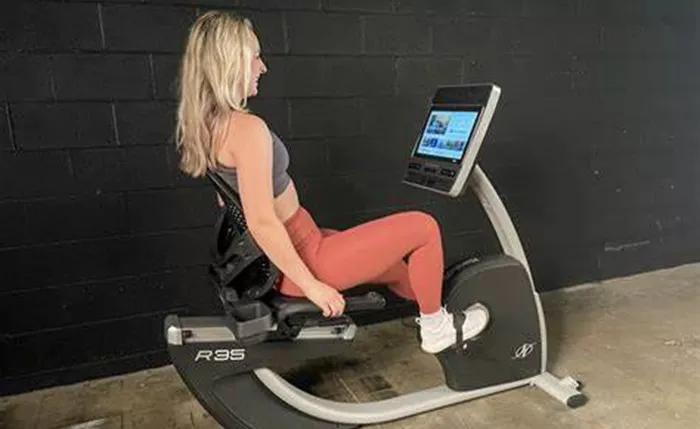Recumbent fitness bikes have become increasingly popular in gyms and home workout spaces due to their unique design and benefits. Unlike traditional upright bikes, recumbent bikes provide a more comfortable seating position, allowing users to engage in cardiovascular workouts with reduced strain on the back and joints. This article will guide you through the various aspects of using a recumbent fitness bike effectively, from setup to workout strategies, ensuring you maximize your exercise sessions.
The Recumbent Bike
A recumbent bike is a stationary exercise bike designed with a reclined seating position. The pedals are positioned in front of the user rather than below, which allows for a more relaxed posture. This design reduces pressure on the lower back and joints, making it an excellent option for individuals with mobility issues or those recovering from injuries.
Benefits of Using a Recumbent Bike
1. Lower Impact on Joints: The recumbent design minimizes stress on the knees, hips, and ankles, making it suitable for users of all fitness levels.
2. Comfortable Seating: The larger seat with back support allows for extended workout sessions without discomfort.
3. Improved Posture: Users can maintain an upright posture without straining their necks or backs.
4. Versatile Workouts: Recumbent bikes can be used for various workout styles, including steady-state cardio and interval training.
Setting Up Your Recumbent Bike
Adjusting the Seat
Proper seat adjustment is crucial for an effective workout. Follow these steps:
1. Sit on the Bike: Place your back against the seat and ensure your feet can comfortably reach the pedals.
2. Adjust the Seat Position: Slide the seat forward or backward until your knee is slightly bent when your leg is at the furthest point in the pedal stroke.
3. Secure Your Feet: Use foot straps if available to keep your feet firmly on the pedals.
Understanding Resistance Levels
Most recumbent bikes come with adjustable resistance settings. Familiarize yourself with these options:
Low Resistance: Ideal for warm-ups and cool-downs.
Moderate Resistance: Suitable for steady-state cardio workouts.
High Resistance: Used for interval training or strength-building sessions.
Warming Up Before Your Workout
Before beginning any workout, it’s essential to warm up to prepare your muscles and prevent injury:
1. Dynamic Stretches: Spend 5-10 minutes performing dynamic stretches focusing on your legs and core.
2. Light Pedaling: Start pedaling at a low resistance for 5 minutes to gradually increase your heart rate.
Types of Workouts on a Recumbent Bike
1. Steady-State Cardio
Maintain a consistent pace at moderate resistance for 20-60 minutes.
Aim for heart rate zones that promote cardiovascular health.
2. Interval Training
Alternate between high-intensity bursts (1-2 minutes) and low-intensity recovery periods (2-3 minutes).
This method increases calorie burn and improves endurance.
3. Endurance Training
Gradually increase workout duration over weeks, starting from 20 minutes up to 60 minutes or more as your fitness improves.
4. Strength Training
Incorporate higher resistance settings during shorter sessions (15-30 minutes) to build muscle strength in your legs.
Monitoring Your Progress
To track your progress effectively:
Use built-in metrics such as distance, time, calories burned, and heart rate.
Consider maintaining a workout journal or using fitness apps to log your sessions.
See Also: What to Look for in a Recumbent Exercise Bike?
Cool Down After Your Workout
Cooling down is as important as warming up:
1. Gradual Decrease in Intensity: Spend 5-10 minutes pedaling at low resistance to help your heart rate return to normal.
2. Static Stretching: Follow up with static stretches focusing on your legs and lower back to enhance flexibility and recovery.
Common Mistakes to Avoid
1. Incorrect Seat Positioning: Ensure that your knees are slightly bent at full extension; this prevents strain.
2. Overexertion Early On: Start with lower resistance and gradually increase as you build strength and endurance.
3. Neglecting Form: Maintain an upright posture with your back against the seat; avoid leaning forward excessively.
Safety Tips While Using a Recumbent Bike
1. Hydration: Keep water nearby and stay hydrated throughout your workout.
2. Listen to Your Body: If you experience pain or discomfort, stop exercising immediately.
3. Regular Maintenance Checks: Ensure that all parts of the bike are functioning properly before each use.
Conclusion
Using a recumbent fitness bike can be an enjoyable and effective way to improve cardiovascular health while minimizing strain on your body. By understanding how to set up the bike correctly, creating diverse workout plans, monitoring progress, and adhering to safety guidelines, you can make the most out of every session. Whether you’re new to fitness or looking for a low-impact alternative, incorporating a recumbent bike into your routine can lead to significant health benefits over time. With dedication and proper technique, you’ll find that this versatile piece of equipment can help you achieve your fitness goals efficiently and comfortably.
Related Topics
How Can I Ride a Stationary Bike With Bad Knees?

































